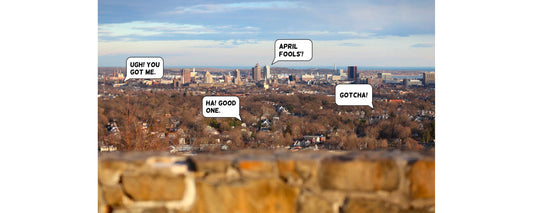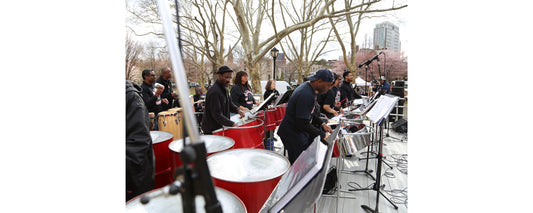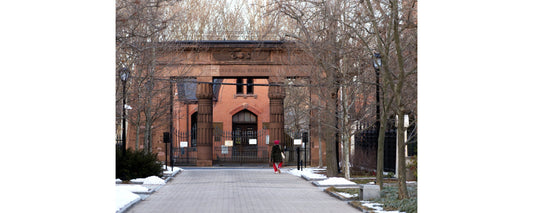It’s hard to imagine the game of football without yard lines and fourth downs and organized teams of 11. But before New Havener Walter Camp, the sport was missing all of those elements and more.
The man who became known as “the father of American football” spent most of his life in the Elm City and left a lasting impact on his favorite game, including the creation of rules that established “the play from scrimmage, the numerical assessment of goals and tries, the restriction of play to 11 men per side, set plays, sequences and strategy features” of today’s game, as the Walter Camp Football Foundation, based in New Haven, puts it.
sponsored by
Camp was involved in choosing the first All-America team in 1889. “The lore is he did it all himself the first several years,” says Al Carbone, volunteer publicity chairperson for the Walter Camp Football Foundation, which is charged today with naming college football’s All-Americans. On Walter Camp Weekend, this year scheduled for March 10 and 11, the foundation will host its annual national awards dinner at the Yale Schwarzman Center, virtual local hospital visits by players and celebrities and a High School Breakfast of Champions at the Omni Hotel. The foundation’s 2022 player of the year, USC quarterback Caleb Williams, was recently announced.
Camp the man was just three years old when he and his parents moved to New Haven from Meriden in 1862. He grew up at 595 Chapel Street and attended Dwight School, where his father was the principal, then Hopkins School, where he pitched for the baseball team and served as captain of the football team. Hopkins School archivist Thom Peters believes it’s possible Camp may have begun testing his new rules for football at Hopkins; as a freshman at Yale, he participated in intercollegiate gatherings to discuss the emerging standards.
They were a long time coming. During Camp’s childhood, the games of rugby and soccer were developing in England as two discrete sports. British troops brought rugby to Canada during the US Civil War, according to Walter Camp and the Creation of American Football (2018), a biography by Roger R. Tamte, and the game traveled south from there. Rugby became Harvard’s game of choice; soccer became Yale’s. The two teams met for the first time on November 13, 1875. In order to play each other, they worked out some “concessionary rules,” which Tamte dubs “minor… such as using Yale’s soccer-type round rubber ball instead of the watermelon-shaped rugby ball.” Camp, who was a senior at Hopkins that fall but often hung out at Yale, helped set up the field for the historic game. Harvard trounced Yale, but Yale was intrigued, and the seed of American football was planted.
Camp participated in many student delegations that met in those years to hash out the rules. In 1882, for example, the problem at hand was that the game had become “negative, a game of keep-away,” as evidenced by an 1881 Princeton-Yale contest in which Princeton controlled the ball for almost the entire first half, gaining only 10 yards, and Yale held the ball throughout the second half. Camp, by then a Yale medical student, proposed a “radical” solution: marking the field in five-yard increments and allowing each team only three consecutive downs to advance the ball at least five yards, or give it up to the other team’s control “on the spot of the last down.”
The proposal was entirely unique in several ways, Tamte notes. It “allow[ed] a team to continue offensive play by satisfying a condition” (measured in yards and downs); it “introduce[d]… critical numerical distance measurements into a still primitive game”; and it “reconstruct[ed] the basic method of play in reliance on a steady repetition of such measurements.” Camp’s peers were skeptical, but when his “crazy and unworkable” idea was tested later that year, it worked. Football fans today will recognize Camp’s suggestion as a key component of the game./p>
Other rules were designed to address concerns about the physical “brutality” of football, raised by critics in Camp’s time as they continue to be today. At the time, Tamte writes, “trained college players experienced few serious injuries” and often played an entire game without substitutions. Camp had been involved in creating rules that limited “mass plays and other rough features of the game,” but he was more interested in the game’s positive qualities: “self-denial, discipline, obedience, unmurmuring pluck, and a good deal of patience,” as Tamte quotes him. Camp was opposed to the use of helmets, and even when others put them on, the Yale teams he coached played without them.
A 1905 meeting at the White House among President Teddy Roosevelt, Secretary of State Elihu Root and two representatives each from Harvard, Princeton and Yale, including Camp, addressed the issue of rough play. A statement was crafted encouraging coaches to “carry out in letter and spirit the rules of the game of football relating to roughness, holding and foul play.” That was as far as any of football’s most powerful supporters were willing to go to suppress its “manly” roughness. But later that year, when players from Union College and a high school in Indiana died during games, protracted and sometimes heated negotiations emerged among football’s leading proponents about new rules for safer, “open play.” These included one of Camp’s suggestions: expanding the yards to be gained from five to 10.
While Camp spent much of his life at Yale—as an undergraduate, an ultimately unsuccessful medical school student, an athletic supervisor and a coach—he made his living by working his way up through the New Haven Clock Company to become its president and CEO. Still, football was his first love. He was the author of numerous books and pamphlets on football rules and the game in general, as well as magazine articles, novels and the famous “Daily Dozen” exercise routine.
Perhaps fittingly, Camp died during a 1925 football rules meeting in New York City’s Hotel Pennsylvania, where his colleagues found him in his bed following an apparent heart attack. His legacy is memorialized in the names of the athletic center at Hopkins School and the Walter Camp Memorial near the Yale Bowl, as well as the names of numerous camps and awards including the Walter Camp Player of the Year award, one of college football’s premier individual honors. He’s buried at Grove Street Cemetery.
Today the Walter Camp Football Foundation’s volunteers work hard to keep Camp’s legacy alive and rooted in New Haven. Carbone calls Camp “the P.T. Barnum of football… He was the one who, with Yale, went across the country and started advocating the sport… outside of the Ivy League,” Carbone says. He points out that the growth of football can be seen as new colleges and universities appeared on successive All-American lists, spreading from the East Coast to the Midwest to California and Texas.
But as far as Carbone is concerned, all roads lead back to New Haven: “When we host our weekend…, we consider ourselves the football capital of the world.”
Walter Camp Weekend 2019
hosted by the Walter Camp Football Foundation
Jan 10-12, 2019
www.waltercamp.org/…
Written by Kathy Leonard Czepiel. The first and second images of Walter Camp are part of the History of the class of 1880 Yale College 1876-1910 collection, Manuscripts and Archives, Yale University Library. The third image of Camp is part of the Images of Yale individuals, ca. 1750-2001 (inclusive) collection, ibid. Images of the Walter Camp Memorial, as well as the Yale Bowl background, photographed by Dan Mims. This updated story was originally published on December 12, 2018.








